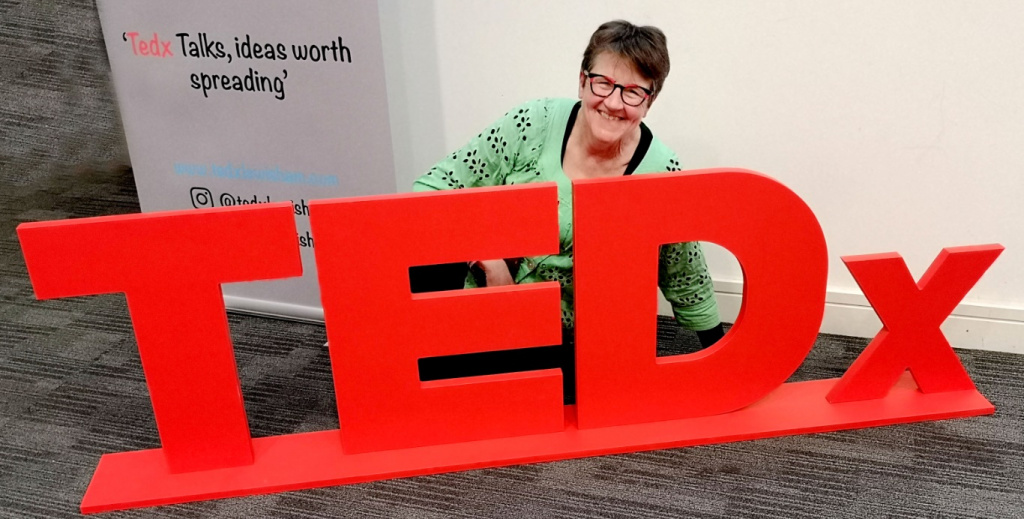It’s you or the slides!

Lyn Roseaman, in her first guest post for Significant Insights, asks: Are you the presenter or the slide operator because your audience won’t allow you to be both.
Not a day goes past when I don’t shudder at the sight of PowerPoint slides created to enhance a presentation. ‘Death by PowerPoint’ isn’t a new phrase, yet most presenters, sadly, keep knocking out slides guaranteed to work against them, disengage their audience and create a whole load of unnecessary work.
Any of these sound familiar?
- When we’re invited to speak or present, we start knocking out slides. It’s like being on autopilot – we have some data so let’s make a slide
- As speakers, we’re generous and we want to share what we know, but it’s invariably more than an audience can take in when they hear it for the first time
- Slides become a crutch to remind you what you want to say
Two things you need to know about slides
- Audiences tend to read before they listen. If you put up a slide that takes more than a glance to absorb, then you’ve just made the slide deck the presenter. You are redundant!
- Impactful slides SUPPORT, not replace, the speaker – they are not the pre-read or the leave-behind. They must bring your message to life, at a glance, and free you to talk about why it matters/the learning/action point
Less is always more. Today’s audiences have miniscule attention spans – some say less than a goldfish, ie seconds, not minutes. Slides undermine your presence and limit your ability to be responsive to your audience in the moment.
And hiding behind slides online is even worse as people stare at a screen with a tiny image of you in the corner somewhere.
It’s you, your stories and your clear message that keep audiences focused and attentive.
Message first. Slides last – nine ways to make an impact
Message first – Start by being crystal clear on your message and the stories you need to share. Don’t slavishly make slides just because it’s on your questionnaire. Bring in the information you need to support your point
Purpose – Agree with your client what you’ll present and what you’ll provide as a leave-behind document. Don’t forget, different audiences have different needs and you need to produce relevant content for each. For instance, the board does not want the detail of the marketing team
Must-have info only – Only include slides that directly drive forward your message – support you and illuminate your message. You won’t need very many. Good for you in terms of preparation time. Good for the audience as they came to listen to you, not read a slide deck
Support, not replace – Be sure that each slide supports, not replaces, you. There is nothing worse than loads of bullet points that you’re going to read – audiences can read faster than you can speak!
Data don’t make an impact – Numbers and percentages aren’t particularly engaging, relatable or memorable, so keep them to a minimum. For example, poor mental health affects one in four people in any given year. That’s two of the people sitting at your table. Maybe more. Or Foetal Alcohol Syndrome affects 6% of the population – that’s two children in every class of 30
Use visuals – A picture really does speak a thousand words… at a glance. The acid test. A picture will convey information far more efficiently and quickly than you can with words. Find your relevant story and share a picture that encapsulates its essence
Big and bold – Channel Steve Jobs and use large fonts and few words. He famously put one word on a slide in 190-point size. Audiences can take in what’s on the slide at a glance and then have to listen attentively to find out more. Don’t overload your slides – less is always more
Builds help keep listeners with you – Use animations/builds so the audience only sees what you want them to see at the right moment. Putting all the information up at one go allows the audience to read ahead and ignore what you’re saying
Slides last – Write the slides last. You’ll be surprised by just how few you need and how much time you save!
Remember, it’s you or the slides.
Liberate yourself from endless, dull slides that regurgitate the findings of your questionnaire. Find your message and enter the sweet spot where you and your listeners are working together, almost co-creating your presentation. Only then can you give your audience what they came for – something new, relevant, engaging and memorable.
About the author

Bestselling author, international speaker, public speaking expert and founder of Now You’re Talking coaching business, Lyn Roseaman ensures people find their voice and transform their lives. Following a successful international career as a market research director, Lyn knows what makes people tick. Now she brings that to public speaking, helping busy people build their confidence and create powerful stories and narratives that deliver maximum relevance and impact to today’s key target audiences. www.nowyouretalking.co.uk